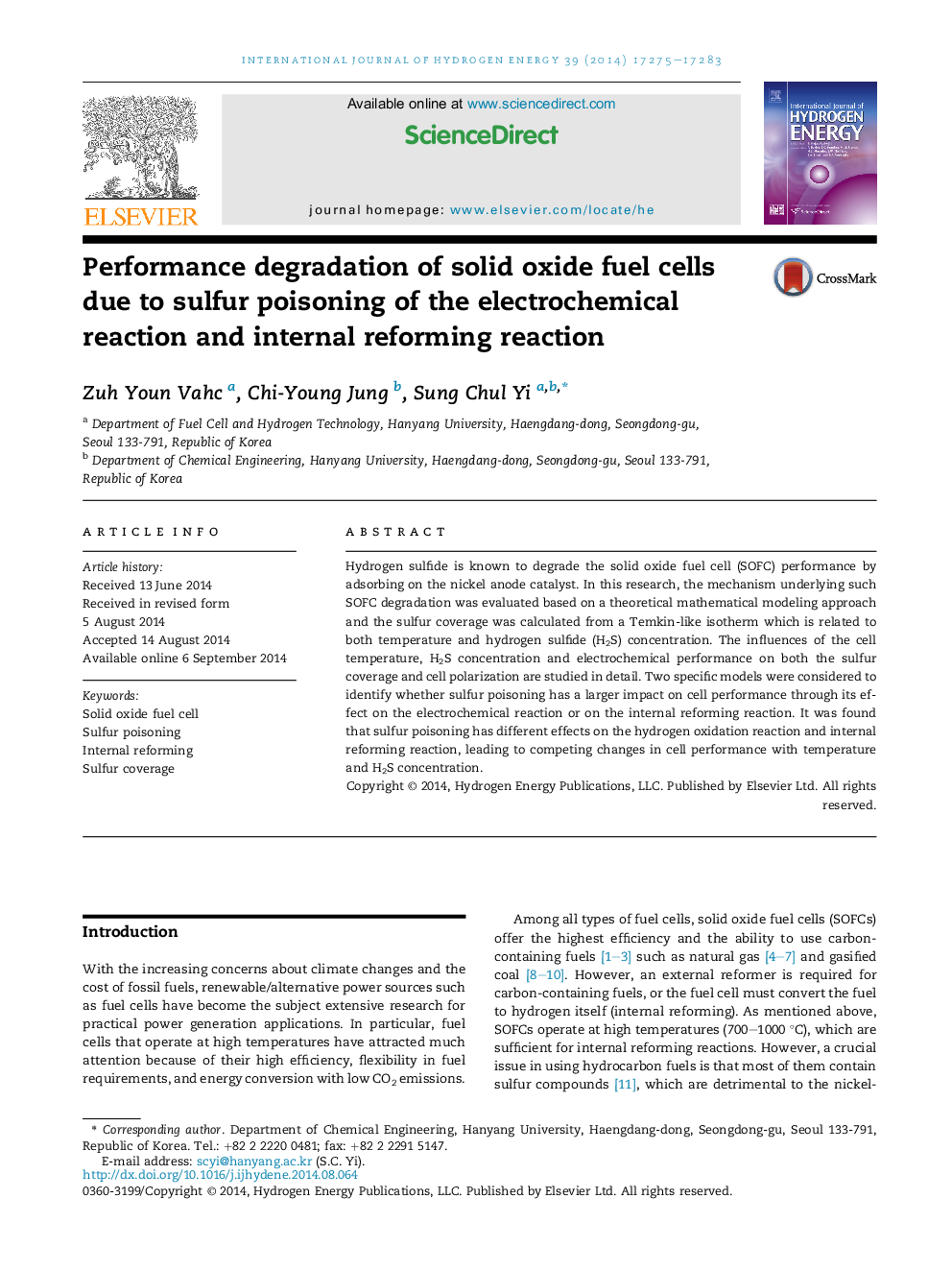| Article ID | Journal | Published Year | Pages | File Type |
|---|---|---|---|---|
| 1272183 | International Journal of Hydrogen Energy | 2014 | 9 Pages |
•Sulfur poisoning effects in solid oxide fuel cells were examined.•Effects of temperature and H2S concentration on sulfur coverage were studied.•Effects on the electrochemical and internal reforming reactions were compared.•Sulfur poisoning had distinctly different effects on the two different reactions.
Hydrogen sulfide is known to degrade the solid oxide fuel cell (SOFC) performance by adsorbing on the nickel anode catalyst. In this research, the mechanism underlying such SOFC degradation was evaluated based on a theoretical mathematical modeling approach and the sulfur coverage was calculated from a Temkin-like isotherm which is related to both temperature and hydrogen sulfide (H2S) concentration. The influences of the cell temperature, H2S concentration and electrochemical performance on both the sulfur coverage and cell polarization are studied in detail. Two specific models were considered to identify whether sulfur poisoning has a larger impact on cell performance through its effect on the electrochemical reaction or on the internal reforming reaction. It was found that sulfur poisoning has different effects on the hydrogen oxidation reaction and internal reforming reaction, leading to competing changes in cell performance with temperature and H2S concentration.
